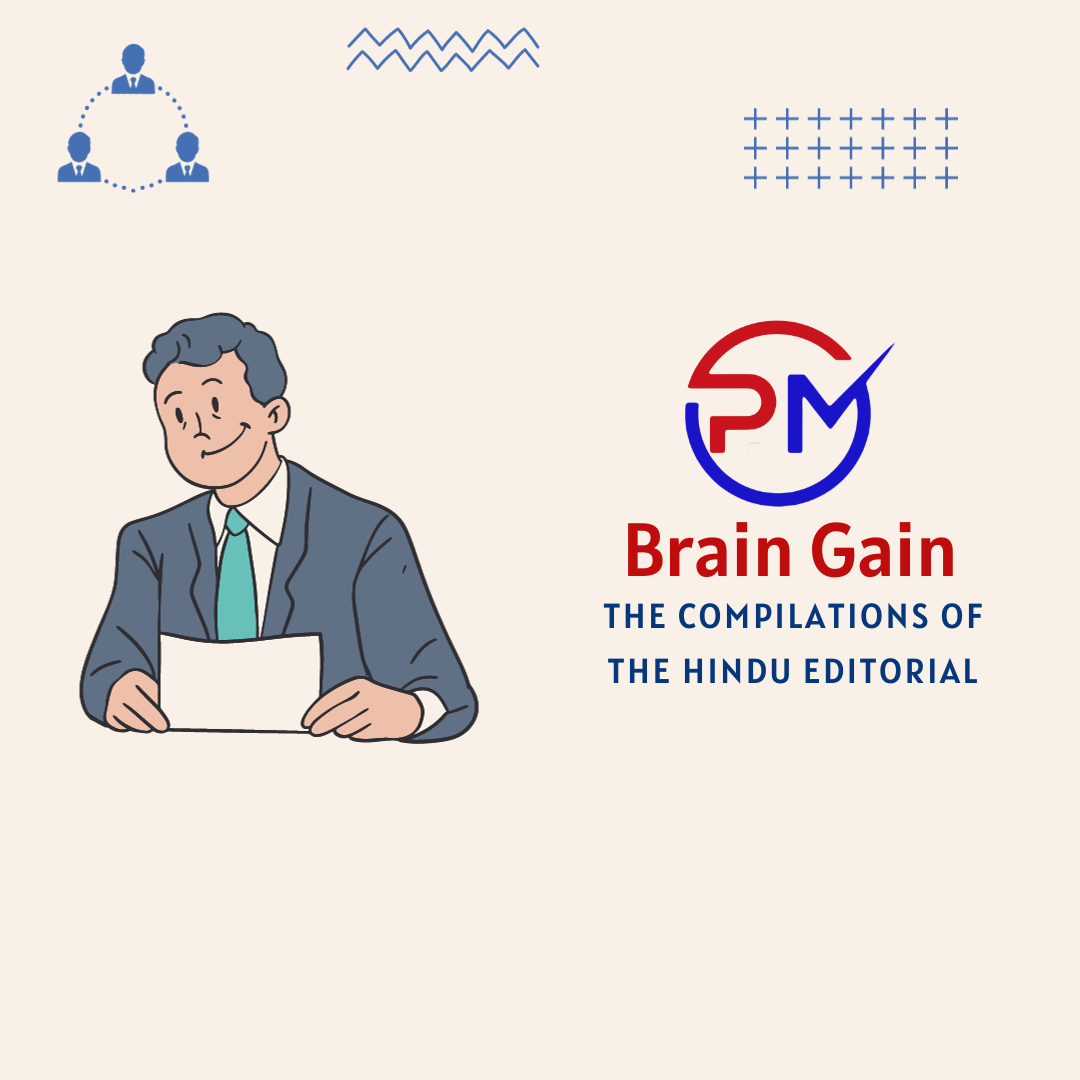Editorial 1 : Finding funds
Context: A healthy loss and damage (L&D) fund, a three-decade-old demand, is a fundamental expression of climate justice.
Introduction
- Loss and damage refer to the negative consequences that arise from the unavoidable risks of climate change, like rising sea levels, prolonged heatwaves, desertification, the acidification of the sea and extreme events, such as bushfires, species extinction and crop failures.
- The L&D fund is a corpus of money and technologies that will be replenished by developed countries and used by the rest to respond to the more unavoidable effects of climate change.
- On the first day of the COP28 climate talks under way in the United Arab Emirates (UAE), representatives of the member-states agreed to operationalise the L&D fund.
Steadfast efforts of the G-77 bloc
- The announcement was dearly won at the end of the COP27 talks in Egypt last year, member-states agreed to launch such a fund, thanks largely to the steadfast efforts of the G-77 bloc of countries plus China, led by Pakistan. Four meetings of the Transitional Committee (TC) were to follow to determine how its money would be disbursed.
| Advantages of Loss and Damage FundIn addition to financial losses, loss and damage also refers to human casualties, ecosystem and cultural heritage degradation, and ecosystem degradation. As a result, the fund will fully compensate for all losses brought on by climate change.The fund guarantees climate justice to the most developing countries and small island nations’ vulnerable communities, who have paid the price without even causing environmental pollution.Climate finance has till now focused only on mitigation and adaptation. Two-third of the finance has gone into climate change mitigation and one third has gone into adaptation. The LDF draws the focus of climate finance towards reparations for the loss and damage. |
Major issues
- It will be hosted by the World Bank for an interim period of four years and will be overseen by an independent secretariat. The Bank is expected to charge a significant overhead fee.
- While some countries have committed amounts to the fund — from $10 million by Japan to $100 million each by Germany and the UAE — whether they will be periodically replenished is not clear.
- The committed amounts are also insufficient, totalling $450 million (for now) against an actual demand of several billion dollars. This shortfall, though it is premature to deem it so, comes against the backdrop of developed countries missing their 2020 deadline to mobilise a promised $100 billion in climate finance and managing to deliver only $89.6 billion in 2021.
- The contributions are voluntary even as every country has been invited to contribute.
- Finally, the World Bank will have to meet some conditions on managing the fund, including a degree of transparency it has not brooked so far, and submit a report to the Parties to the Paris Agreement. If its stewardship is determined to be unsuitable, the fund can ‘exit’ the World Bank.
Ensuring effectiveness
- It is important that a Loss and Damage Fund tackles the gaps that current climate finance institutions such as the Green Climate Fund do not fill.
- Combined adaptation and mitigation finance flows in 2020 fell at least US$17 billion short of the US$100 billion pledged to developing countries.
- The Transitional Committee will provide recommendations for the set up and operations of the fund. The Committee will also recommend which countries should receive funding and who should be paying into the fund. All that needs to be decided upon.
- But for the fund to be effective, the root cause of climate change must be tackled – and that involves reducing emissions. Unless emissions are drastically reduced, more and more countries will face the devastating effects of climate change. The world urgently needs to find more resources for mitigation, adaptation and loss and damage so that climate change will not erode humanity’s chances to deliver on the Sustainable Development Goals.
Way forward
- The L&D fund’s contents need to be easily accessible to those who need it most, in timely fashion, sans pedantic bureaucratic hurdles, and in sufficient quantities. As things stand, there is little guarantee that any of these requirements will be met. While the L&D fund is finally online, a lot more needs to be done.
Editorial 2 : Patchy expansion
Context: The latest provisional estimates of GDP for the quarter ended September 30, released by the National Statistical Office, project real economic growth at 7.6%, a slight deceleration from the 7.8% logged in the preceding three months.
Introduction
- Gross Value Added (GVA) across the eight broad sectors of the economy reflected a marginal slowing, with second quarter GVA registering a 7.4% expansion, 40 basis points slower than the April-June period’s 7.8%.
- Robust double-digit expansions in manufacturing, mining, utilities and construction offset the loss of momentum across the other four sectors and helped ensure that the year-on-year growth in GVA comfortably exceeded the 7% pace for a second straight quarter.
| Gross Value Added (GVA)Gross Value Added (GVA) is the value that producers have added to the goods and services they have bought. When they sell their wares, producers’ income should be more than their costs, and the difference between the two is the value they have added.For example, a brewer will buy barley, hops, and yeast and turn it into beer which they will sell for more than they paid for the ingredients. They will also have overheads for their brewery like heat, light, and insurance. The difference between all these costs and ingredient costs and what the brewer receives in payment for their goods is their Gross Value Added.Gross Value Added can be calculated in two ways. First, as we said, by subtraction like this:Total Output (similar to turnover)Minus total Intermediate Consumption (cost of goods and services).Gross Value Added can also be calculated by addition like this:Gross Operating Surplus and Gross Mixed Income (like profit)Plus, Compensation of Employees (like wages and salaries). |
Growth in different sectors
- Manufacturing, buoyed by a favourable base effect due to the contraction in the year-earlier period, was the strongest performer by registering growth of 13.9%, a nine-quarter high.
- Construction witnessed its best showing in five quarters, expanding 13.3%. Of the four other sectors, the crucial ones of agriculture and the two services sectors of trade, hotels, transport and communication, and financial, real estate and professional services saw the pace of growth almost halving from the fiscal first quarter.
- While year-on-year growth in the agriculture, livestock and fishing sector slowed sharply to an 18-quarter low of 1.2%, the sector also experienced a sequential contraction for the third straight quarter, underscoring the precarity plaguing large portions of those earning from farming and allied activities in the rural hinterland.
- The slowdown in two key components of the services economy — trade, hotels, transport, and communication saw growth slide to 4.3%, from 9.2% in the June quarter, and the expansion in financial and realty services more than halved from the preceding period to 6% — also merits a closer watch as the post-pandemic rebound in services appears to have lost steam.
| Eight Core SectorsCoal, crude oil, natural gas, products from refineries, fertilizer, steel, cement, and electricity are the eight main sectors.Of the weighted items in the Index of Industrial Production (IIP), these make up 40.27%.The eight core sector industries are listed in decreasing weight order as follows: Products from Refineries: Energy; Steel; Coal; Crude Oil; Natural Gas; Cement; Fertilizers. |
Role of Demand side
- Adding to the need to view the headline growth number with circumspection is the fact that the lynchpin private final consumption expenditure, the single-largest component of demand in the economy, is struggling for traction.
- Growth in private consumption spending slowed appreciably to 3.1% in the September quarter, from 6% in the preceding three-month period, as rural demand remained affected by the vagaries of a below-average monsoon.
- The NSO data also reveal that the recent economic momentum owes its fillip in large measure to front-loaded government spending, both in terms of consumption demand and asset-creating capital investments.
Conclusion
- The challenge for policymakers will be to help broaden the growth base so as to ensure that all boats are lifted equally, both to sustain the momentum and reduce inequality.


